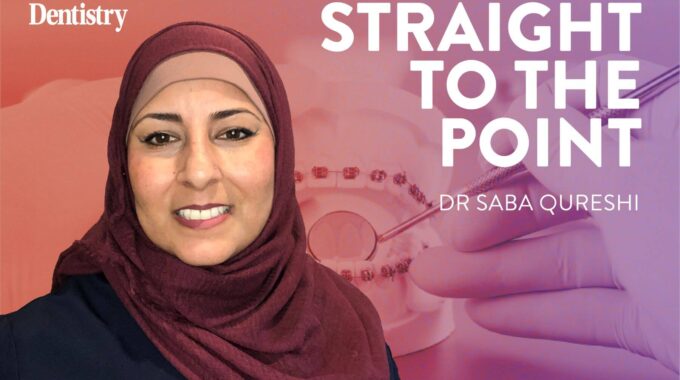Good oral hygiene is an important factor in maintaining dental health for everyone, however, it…

Orthodontic treatment and the periodontally compromised patient
Orthodontic treatment benefits patients in a multitude of ways…improving smile aesthetics, creating functional bites, enabling good oral hygiene, not to mention boosting self-confidence. However, it is not without its risks, and these need to be understood in order to be able to provide our patients with the best treatment options and outcomes.
With an ever-growing cohort of adult patients seeking orthodontic treatment, many of whom may present with a history of periodontal disease, one factor we need to pay particular attention to is the relationship between orthodontic tooth movement and the periodontium.
To do this we first need to look at what happens to the periodontium when we have braces or aligners.
Orthodontic appliances are used to apply forces to teeth, which in turn, produce stresses on the periodontal ligament, causing bone remodelling. This results in tooth movement.
When light forces are applied, frontal resorption occurs. Osteoclastic activity results in bone resorption where there is pressure and new bone is laid down in areas of tension through stimulation of osteoblasts. This is considered the ideal type of movement as it causes less discomfort and less damage to the periodontium.
If excessive forces are applied, however, a process called undermining resorption occurs instead. In this case the periodontal ligament is compressed to such an extent that the blood supply is cut off, creating an avascular cell-free zone. This is called hyalinization and causes tooth movement to temporarily stop. This hyalinized area must be removed by regeneration of the periodontal ligament before tooth movement can resume and is associated with greater levels of pain.
“How is this relevant to our adult patients?,” I hear you ask.
Well, it has been shown that the periodontal ligament does not regenerate in those with periodontitis, resulting in increased levels of bone and attachment loss. So, the magnitude of forces applied to teeth must be taken into account.
We are all likely to see such clients in our clinics, as patients with a history of periodontal disease can present with:
- Spacing of anterior teeth
- Increased overjet due to proclination of teeth
- Increased overbite because of over-eruption of teeth
- Traumatic bites
- Rotated teeth
These issues create both functional and aesthetic problems, for which patients will seek orthodontic treatment.
Those with already compromised periodontal health are at increased risk of periodontal complications like further bone loss, gingival recession, and root resorption, resulting in increased tooth mobility. However, studies have shown that periodontally involved teeth can be moved successfully without further reduction in periodontal support, provided plaque levels are controlled and there is no active disease present. In fact, such patients may benefit from orthodontic treatment to aide plaque removal and stabilise the dentition.
So, how do we go about planning orthodontic treatment for such patients?
Well, prior to embarking upon any orthodontic treatment, a thorough assessment should be undertaken to ensure periodontal health. If any teeth are affected by periodontal disease, these must be stabilised before orthodontic treatment commences.
Patients may require several treatments, such as scaling or root planning, to achieve periodontal health and should be made aware of the importance of this stage. Once completed, it is advised that patients wait approximately 6 months before orthodontic treatment begins to allow for remodelling of the periodontal tissue and review of their condition.
Once periodontal health has stabilised and orthodontic appliances have been fitted, continued review of the periodontal condition and maintenance of good oral hygiene is a must. It is well known that orthodontic appliances, fixed braces in particular, are associated with increased plaque retention and gingivitis, so comprehensive instructions for cleaning teeth and appliances is essential, as will be regular hygiene appointments at 3-6 monthly intervals. It is my belief that all orthodontic patients should be made aware of, and consented for, upkeep of excellent oral hygiene throughout their treatment. They should also be informed that treatment may have to be postponed or discontinued should oral hygiene become unsatisfactory at any point, to further emphasise the importance of optimal oral hygiene.
As to treatment mechanics, for those patients with a history of periodontal disease, it may be sensible to consider compromised treatment plans. Individual biological factors will influence the effect that mechanical orthodontic tooth movement has on the periodontium but using light forces and limiting treatment duration can reduce the risk of further loss of periodontal support.
One might assume that aligner treatment would be better for patients with a history of periodontal disease. Whilst they certainly make it easier to keep teeth clean, studies have shown no difference between the periodontal health of patients with fixed braces and clear aligners, when regular check-ups with a dental hygienist and adequate oral hygiene instructions were implemented.
Of course, some patients will demand nothing short of perfection and this is where our duty of care and candour should kick in. Then, if even the most thorough of discussions does not win them over, it may be best to send them on their way with a bruised ego but with, at least, their periodontal health intact.
Finally, we cannot mention orthodontic treatment without discussing retention. As with all orthodontic patients, retainers are key in maintaining corrected tooth position, but particularly so for patients with a history of periodontal disease. In such cases, permanent retainers may prove useful in supporting periodontally involved teeth, but it is vital that adequate instructions for cleaning around these be provided.
In summary, patients with a history or periodontal disease can have orthodontic treatment safely, if careful consideration is given to periodontal health before, during and after treatment.
